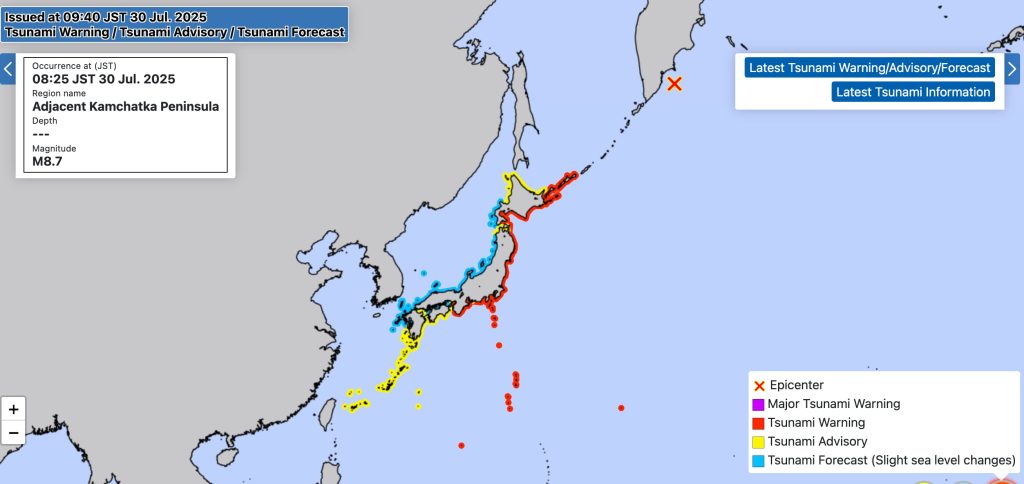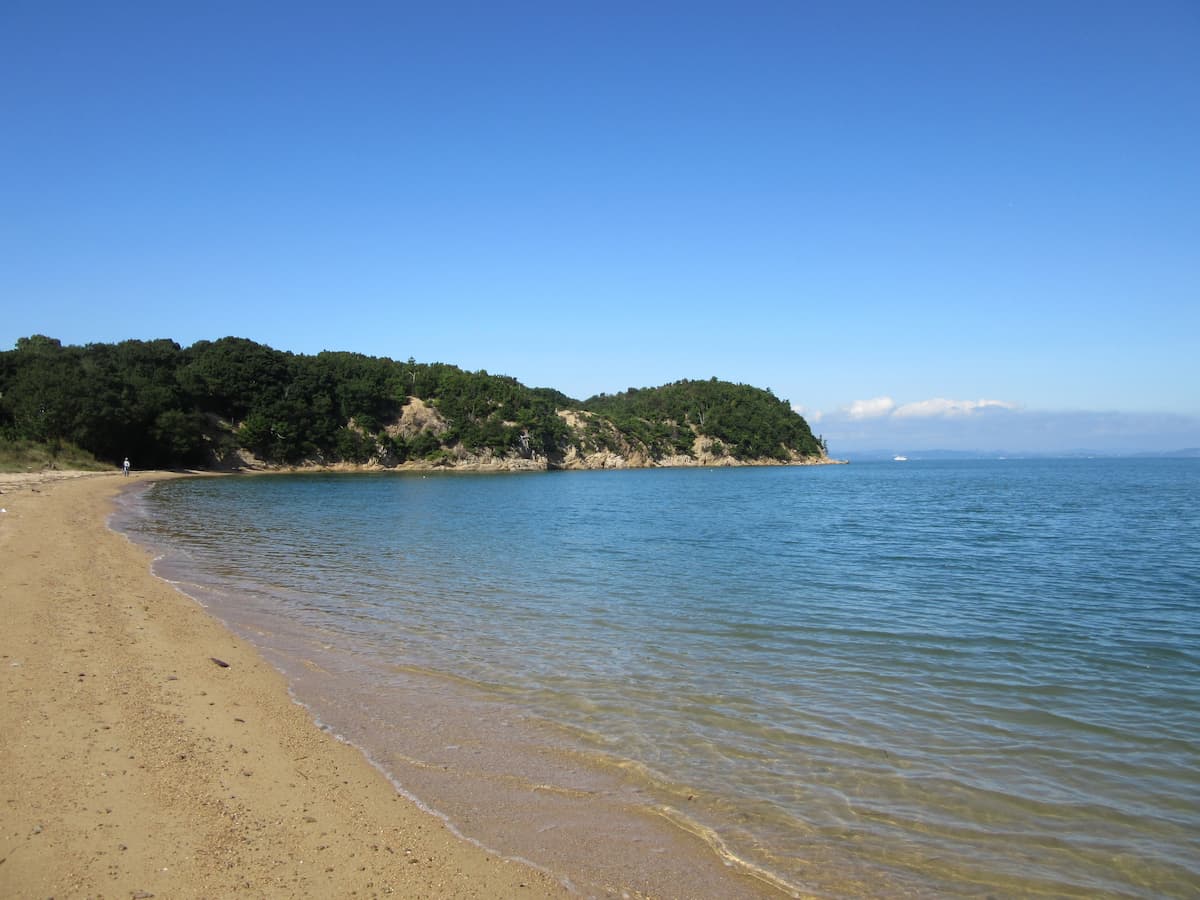At around 8:25 AM (JST) on Wednesday, July 30, a powerful earthquake struck eastern Russia near Japan. The epicenter was located near the Kamchatka Peninsula, and the magnitude of the earthquake is estimated to be 8.0.
While there was no damage reported in Japan, the Japan Meteorological Agency has issued a warning that a tsunami may reach Japan due to the earthquake.
This article explains the details of the earthquake and the potential tsunami threat.
Earthquake Information
Epicenter: Near the Kamchatka Peninsula, Russia (approximately 1,200 km northeast of Hokkaido)
Time of occurrence: Around 8:25 AM on Wednesday, July 30
Magnitude: Estimated at 8.0
Damage in Japan: Shaking of seismic intensity 1 to 2 observed
Tsunami Information

The earthquake occurred near the Kamchatka Peninsula, approximately 1,200 kilometers northeast of Hokkaido in northeastern Japan. While the earthquake did not cause any damage in Japan, there is a risk that a tsunami may reach Japan’s Pacific coast.
In some parts of Hokkaido, tsunami waves are expected to reach heights of up to 3 meters. In most areas along Japan’s Pacific coast, waves as high as 1 meter are expected.
However, depending on the coastal geography, the tsunami could be higher than expected.
The estimated time of tsunami arrival is between 10:30 AM and 12:00 PM on Wednesday, July 30.
What You Need to Keep in Mind During a Tsunami Warning
Tsunamis Are the Real Danger
- 90% of fatalities in the 2011 Great East Japan Earthquake were caused by the tsunami, not the earthquake itself.
- Tsunamis can arrive as soon as 10 minutes after an earthquake.
- The highest recorded tsunami during the 2011 disaster reached approximately 40 meters (131 feet)—the height of a 15-story building.
Immediate Actions to Take
- If you’re near the coast when an earthquake strikes, assume a tsunami is coming and evacuate immediately to higher ground.
In the 2011 disaster, the tsunami took 30–40 minutes to reach some areas. However, during the 2024 Noto Peninsula Earthquake, the tsunami arrived in just 10–15 minutes. Since tsunami arrival times vary depending on the earthquake’s location and strength, do not wait for official warnings—evacuate as quickly as possible.
How High Should You Go?
The 2011 tsunami reached 40 meters (131 feet) in some areas, proving that small buildings near the shore are not safe. While the exact height of a tsunami depends on many factors, avoid assuming a second-floor building will provide sufficient protection. Always move to the highest ground possible.
